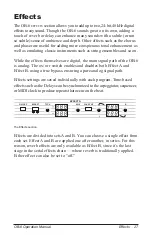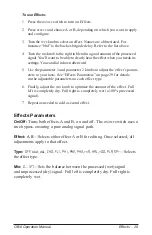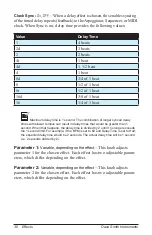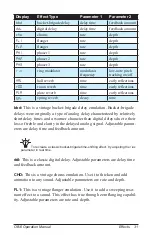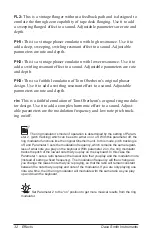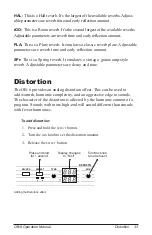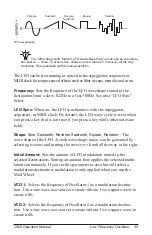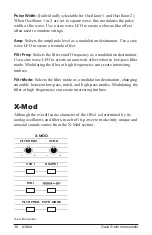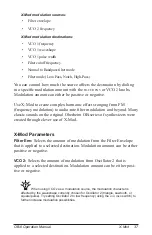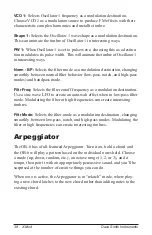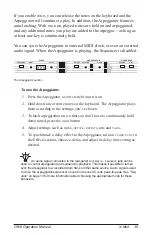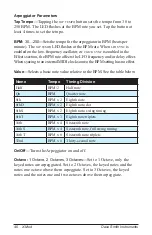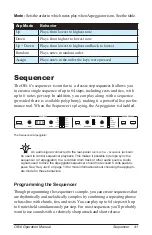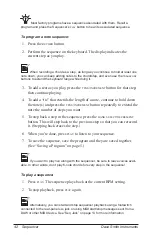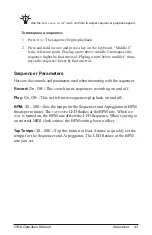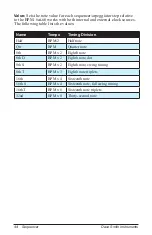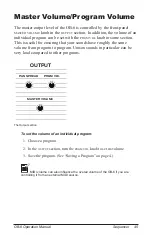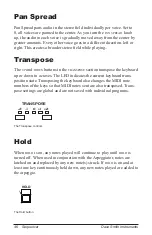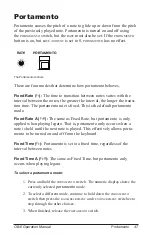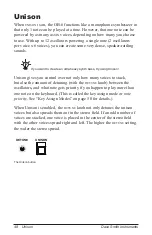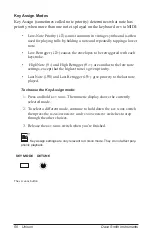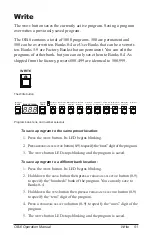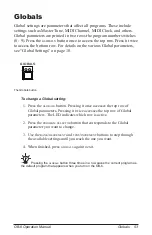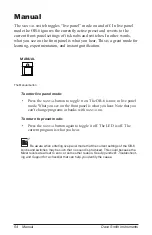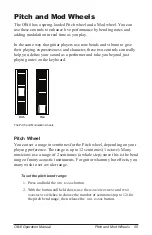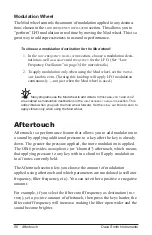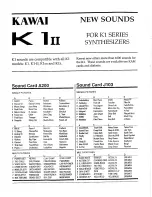
41
OB-6 Operation Manual
Sequencer
Mode:
Sets the order in which notes play when Arpeggiator is on. See the table.
Arp Mode
Behavior
Up
Plays from lowest to highest note
Down
Plays from highest to lowest note
Up + Down
Plays from lowest to highest and back to lowest
Random
Plays notes in random order
Assign
Plays notes in the order the keys were pressed
Sequencer
The OB-6’s sequencer is similar to a classic step sequencer. It allows you
to create a single sequence of up to 64 steps, including rests and ties, with
up to 6 notes per step. In addition, you can play along with a sequence
(provided there is available polyphony), making it a powerful live perfor-
mance tool. When the Sequencer is playing, the Arpeggiator is disabled.
ARPEGGIATOR
SEQUENCER
CLOCK
OCTAVES
VALUE
MODE
TAP TEMPO
BPM
ON/OFF
PLAY
RECORD
The Sequencer/Arpeggiator
An audio signal connected to the rear-panel
footswitch
-
sequence
jack can
be used to control sequencer playback. This makes it possible to tempo sync the
sequencer (or arpeggiator) to a recorded drum track or other audio source. Audio
signals used to drive the arpeggiator/sequencer should not exceed 5 volts peak-to-
peak. See “Seq Jack” on page 13 for more information about choosing the appropri-
ate mode for these behaviors.
Programming the Sequencer
Though programming the sequencer is simple, you can create sequences that
are rhythmically and melodically complex by combining a repeating phrase
or bass line with chords, ties, and rests. You can play up to 64 steps with up
to 6 notes held simultaneously per step. For most sequences you’ll probably
want to use sounds with a relatively sharp attack and short release.
Содержание ob-6
Страница 1: ...Operation Manual...
Страница 2: ......
Страница 10: ......
Страница 94: ...84 Appendix C MIDI Implementation Dave Smith Instruments...
Страница 95: ......

